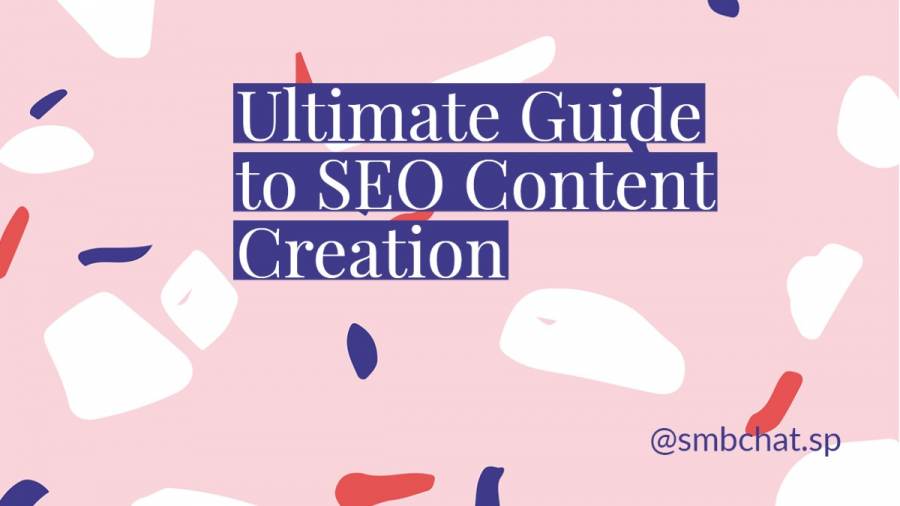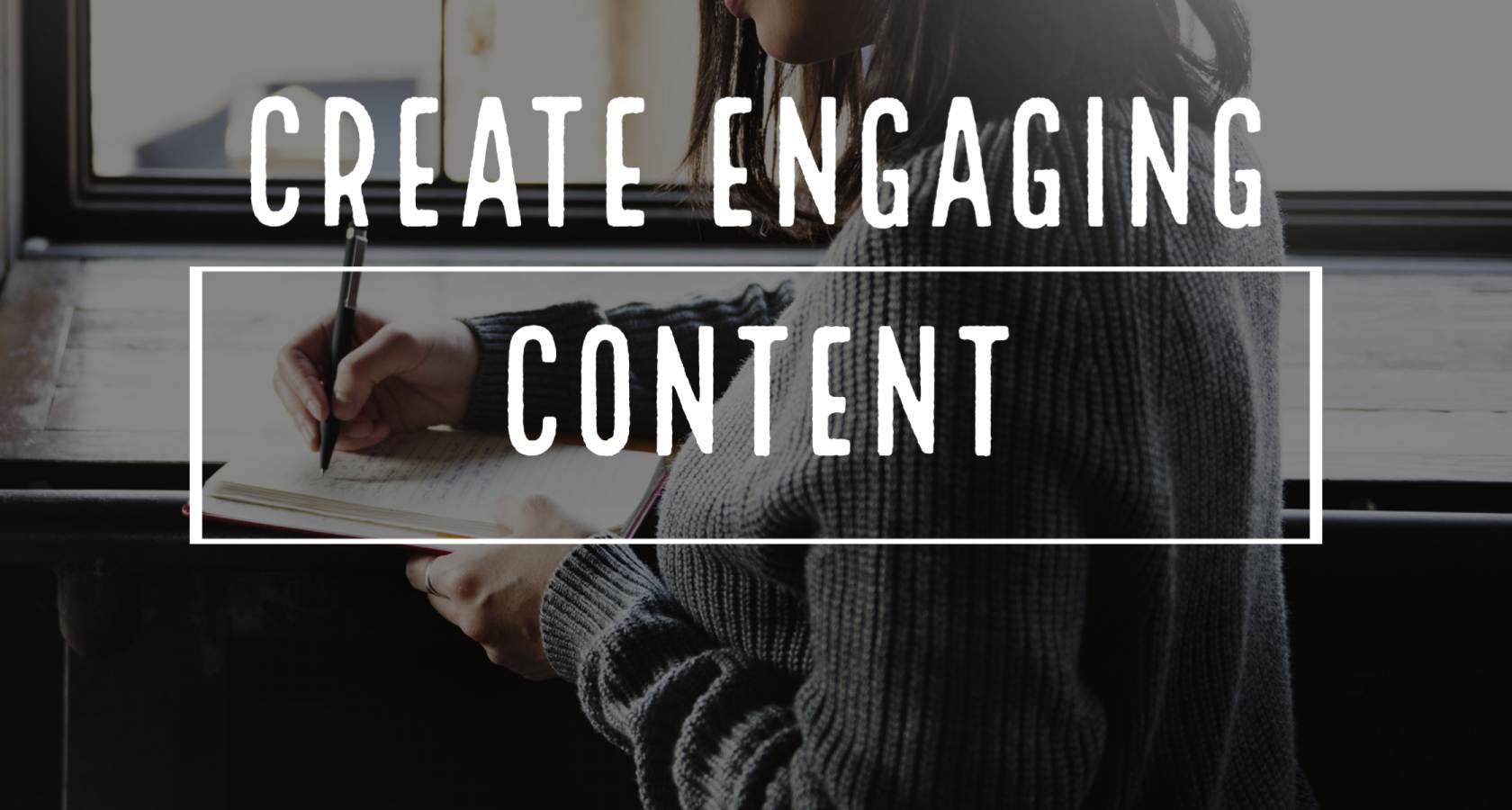Great Copy, More Sales, No B.S: Your No-Fluff Guide to Copywriting
Those few moments before any content creator starts writing a piece of content are surreal.
You're sat there as your computer logs on and the possibilities flood into your mind;
"Maybe today is the day that I write career-defining copy"
"This might be my breakthrough; the greatest copy that I ever create"
However, that optimism is often short-lived, and it's not long before the doubts start to kick in.
"Today's probably just like any other day"
"Let's just get this over with"
Then you realize that at that rate you won't write anything. So you shut the thoughts out of your head, and proceed to type.
and everything goes blank
If you relate, this article was written for guys just like you. It will tell you everything you need to know about all types of copywriting, writing amazing copy, and a little bit more.
What Exactly is Copywriting
Copywriting is a form of content marketing that leverages persuasive writing to prompt a reactionary response from the target audience.
When writing copy, you're not doing it for thought leadership, lead generation, or education. You're doing it to elicit action.
You may write copy to get your audience to:
- Buy a product
- Subscribe to your weekly newsletter
- Read your whitepaper
- Sign up for your online courses
What are the Types Of Copywriting
They're numerous types of copywriting and new ones keep popping up each day. If we wanted to be specific, we'd put down a list that runs forever, but for the sake of your time, here's the different types of copywriting:
- SEO Copywriting
- Direct Response Copywriting
- Email Copywriting
- Conversion copywriting
Writing Great Copy, Tips Hacks, and Best Practices
If you're a copywriter, then your perspective probably swings between two extreme views of copywriting at different times of the day.
Copywriting seems like either:
- The easiest job on earth
- The most complex undertaking since the beginning of the human race
The following tips will help you debug copywriting, water it down to the basics, and see why it's not only the easiest but also the best job on earth.
1. Write-In Your Customer's Voice
You've probably heard people say that this is not how a certain group of people speak.
Alternatively, you've come across people who say
"A gamer or vegan would never say that."
To be an awesome copywriter, you have to master the art of writing in a way your target audience speaks and resonates with.
Your tone, choice of words, and delivery go a long way in determining whether your copy generates sales or ends up in the trash.
Yes! If you're wondering, bankers do speak differently from farmers, so do millennials from much older generations.
This leads us to the next question: How do you know how your customers speak? Well, you can:
-
Familiarize Yourself With Your Audience
It's almost impossible to write persuasive sales copy about people you know nothing about. To become great at copywriting, you have to know your audience at heart.
To do this, watch their choice Youtube videos, read the popular books in the community and read blogs that are favorite among your target audience.
-
Use Forums Such as Quora and Reddit
There is a lot more to Reddit than stereotypical teens. Forums create some of the best places to find copy ideas and write like your audience.
You can go on your audience's Reddit community and find comments by using search words such as "is there," "anybody knows," and "I wish." From there, find recommendations that you can make part of your copy.
-
Look at Buyer Feedback
In copywriting, the things you go far and wide in search of are often under your nose. Read your customer feedback and the comments they leave on your blog.
This will give you an idea of their choice of words, tone, vocabulary, delivery, and the level of complexity your clients speak with.
2. Know Your Target Audience
In copywriting, mastery of your target audience is the beginning of wisdom. Back in the '70s, the generic term "customer" was quite acceptable.
Discussions in the content marketing department probably went something like this:
Paul: "Hey, who are we writing this to."
Jerry: "Who else, the customer."
Then they'd laugh as Jerry passed Paul his cigar in agreement.
In the 21st century, this strategy wouldn't cut it. There is no longer such a thing as "the customer."
Nowadays, there's a millennial Jane in the HR department, Tony who's a vegan, and Jack, a non-nonsense C-level executive.
That's why it's crucial to know who you're writing copy for. Remember, you don't want to write fluff on a copy aimed at Jack or send a roasted turkey background on a Thanksgiving copy aimed at Tony.
You can achieve this by:
-
Creating Buyer Personas
Buyer personas are fictional representations of your target potential customers. They come in handy in all forms of content including blog posts, social media posts, and sales copy.
A buyer persona allows you to dive deeper into the needs, mentality, and perspectives of your target audience.
-
Leverage Statistics and Data
Gut feelings and assumptions have no place in creating copy. That's at least if you want your copy to sell.
If your gut tells you that your audience likes longer posts, but your statistics differ, always go with your previous stats and data over your gut.
-
Look at The Industry Standard
If your brand is the standard in the industry, you're probably doing everything on this post. Otherwise, the copy from industry leaders will tell you a lot about who your target audience is.
Go on the internet and read about five pieces of copy from your top competition. Any similarities you can draw from the copies is what your target customer wants.
-
How About You Become One
The saying it takes one to know one has never been truer. Studies show that copywriters do a better job if they actually love the product they're writing about.
To know your target audience, why don't you become part of it. Before you write copy, make yourself a customer; receive weekly newsletters, annoying popup's and targeted ads, then you'll know your customer.
3. Find a SuitableTone for Your Audience
There are probably three people in every marketing department who can tell the difference between your brand's tone and voice.
After this explanation, yours will have four.
Did you know that past puberty, you're stuck with your voice for life? Similarly, the voice of a brand doesn't change. It carries your brand's personality, choice of words, and overall outlook forever.
However, the tone of your brand changes depending on the context and audience your content is aimed for.
In whitepapers, it's more authoritative.
In sales copy, it's more persuasive.
In blogs, it's more educational.
In a follow up “thank you” email it's more lighthearted.
However, there's more to your brand's tone than single-word "adjectives." The tone that you use is a complex animal. It's meant to elicit a certain reaction from your target audience, making tone an essential aspect of copywriting.
To know what tone your audience resonates with:
-
Look at Copy Your Target Audience Loves
Every industry has a long history of bestselling or successful copy. Your organization probably has a few that outdid themselves or broke records with current customers.
Once you find previous copy that your audience loved, ask yourself what they loved about that tone.
Previously successful copy goes a long way of telling you the tone and delivery your audience appreciates.
-
Find Copy Your Target Audience Hates
Every target audience has copy or content they dislike. It's their job to write brutal comments, and it's yours as a copywriter to find them. Why? They'll tell you exactly what your audience hates on copy.
Watch out especially for tone related comments such as:
"This sounds like it was written for 4th graders."
"Jesus! Who has the time to read through all that."
"These days, everyone is selling something on the internet."
Such comments will tell you a lot about the delivery and tone your target audience appreciates in writing. From the above comments, the audience may appreciate a brief, non-salesly, formal tone.
-
Refer to Your Buyer Personas
Buyer personas form great tools when it comes to tone recognition and delivery. Everybody knows that C-level Executives don't have time.
If your copy is aimed for a CEO, you'd be better off saving the humor for the dinner table and hitting the nail the first chance you get.
5. Benefits Over Features, Anyday
Do features always translate to benefits?
Short answer, No.
Long answer, Absolutely Not.
BMW recently revealed a concept car they called the IX. This car has a mind-boggling feature. Apart from getting you from point A to B(the primary purpose), it could also change the color of its paint job while at it.
The BMW community didn't have a mixed reaction to this in fact; it’s been long since we’ve seen this much unity in the car community. They all went something in the line of:
"Why on earth should I spend money on this feature? What do I need it for."
This brings us to an essential lesson in copywriting. Unless you tell your audience how they benefit from a feature, they'll take all features and product details you throw at them as a marketing gimmick.
Listing a bunch of features is not enough. Above that, you have to go ahead and tell your audience why they'll benefit from the said feature in the first place.
6. Stress on Your Unique Value Proposition (UVP)
You can bet anyone five bucks that any successful copy on the net has a UVP. This explains to your audience why they should pick you instead of the thousands of competitors out there.
Your unique value proposition is what sets your brand from everything else. Maybe your product category is:
- Reliable like Toyota
- Luxurious like Bentley
- Fast like Ferrari
One common mistake brands and content writers alike make is thinking that they're the ones that identify their niche.
On the contrary, it's your target audience that identifies you.
You could develop a tool with large businesses in mind only for it to become popular with small enterprises.
That's the same story with the 4x4 SUVs and offroad vehicles you see selling like crazy in cities and suburbs to soccer mums.
To write compelling copy, you have to add your niche or value proposition. However, this value proposition should be from your client's perspective and not your brand.
To find your unique value proposition:
-
Read Reviews on G2 and Capterra
If every single product review on Capterra or G2 says that your product is "awesome for small enterprises and startups," embrace that title.
You can use it as your UVP in your copy. This is regardless of who the product was aimed for in the first place.
-
Look at Your Customer Feedback
Customer feedback is an invaluable tool to any copywriter. If all positive comments are from medium-sized agencies, then that might be a sign that your product resonates most with medium agencies.
You can then go ahead and use this as a UVP in your copy, for example, "The best software for medium agencies." This is regardless of whether you developed your product for large agencies.
-
Hold Surveys and Interviews
Surveys and interviews are right up there, with customer feedback as essential tools for any copywriter.
Survey questions such as "what do you like about our product" and "what sets our product from your previous one" go a long way in helping you identify your unique value proposition.
7. Address The Pain Points of Your Target Audience
We know;
Your brand has existed for five generations.
You have the best customer service East of the Mississippi.
Your products are Dollar General cheap.
Congratulations, but
Your target audience would rather watch Seinfeld reruns than read copy about a company tooting its horn.
If your clients ever read copy, they want it to be about them, their concerns, and how you're helping them solve said concerns.
Hunting for pain points isn't as hard as people make it seem. With the right set of resources, you'll be able to tell exactly where your prospect's shoe pinches.
- Read Reviews on Capterra and G2
- Find Where Your Competition Falls Short
- Use Product Hunt to find buyer needs
- Leverage Customer Surveys
8. ShowCase Value In Your Copy
You've probably heard this a million times. A timer starts ticking the moment a prospective client starts reading your copy.
If they're halfway through before finding something that addresses their pain points, they bounce. If anything, your copy should provide value as early as possible to your readers.
To prevent the prospect of your reader leaving, you have to provide tangible value. Fortunately, there is a method to the madness, and providing value doesn't have to be hard.
You can:
-
Ensure Your Copy Solves a Particular Problem
Ask any copywriter if their copy solves a general problem, and they'll be quick to say Yes. However, ask them if it solves a specific problem, and it's a different story altogether.
For your copy to provide value, it has to get specific and solve a problem your readers face on a day-to-day basis.
-
Help Your Reader Grow
For your copy to provide value, it doesn't have to necessarily provide a new solution. In some instances, you may write copy that promises your audience of gradual growth, change, or improvement.
9. Utilize Social Proof
Social proof is a psychological phenomenon where people use other people's actions to decide whether or not they'll take action.
It's a form of peer pressure that applies in marketing.
That said, leads are more likely to convert with the comfort of knowing that other people have converted before them.
However, social proof doesn't necessitate millions of reviews or happy customers.
Even a program with only one reviewer that thinks it's the best thing to happen since sliced bread is enough for social proof.
Some excellent ideas for utilizing social proof include:
-
Showing Your Existing Customers
"Join 1,000, 000 small businesses who use our product to convert leads each year."
-
Show Your Conversions For That Product
"Over 1,000 people have joined."
-
Showcase Your Existing Brands
"Join Google and Microsoft in reimagining the future of your Search Engine Optimization today."
10. Being Specific: Copywriting 101
At least once, you must have come across copy that lacks specificity. It is addressed to nobody, wanting them to do nothing at no particular time.
Does that copywriter want to make sales? Guess what, nobody knows.
Alternatively, we've all come across copy that's all over the place. It says everything in general and nothing in particular.
Being specific is copywriting 101, and the following tips will tell you how not to break the first rule of copywriting:
-
Write Like You're Explaining to A Toddler
When writing copy, direct your audience as you would a child. Don't just tell them to register, and leave it at that.
Consider going the extra mile, directing them to write their email on the email tag and click "Buy Now."
-
Don't Make Assumptions on Behalf Of Your Audience
Don't assume that your audience knows a lot about your product. On the contrary, assume that they don't even if they do. Everybody knows what Hubspot does.
However, Hubspot goes ahead and lays it out in their copy regardless. That's because they're not willing to take chances by assuming on behalf of their audience.
-
Use Descriptive Words
The more descriptive you make your copy, the higher chances you get of conversion. To do this, use action words and leverage your reader's five senses.
Try and answer the questions:
- Who
- What
- When
- Where
Instead of telling your potential customers to "click on the button below", go a mile further and tell them to "Click on the blue button" or "Click the button on the bottom right corner."
11. Create A Sense of Urgency
"Without a sense of urgency, desire loses its value" Jim Rohn.
Okay, let's assume you're a buyer. You've been convinced by an excellently written copy somewhere that you need some product or newsletter. What do you do next?
Well, you do what everybody does best; you procrastinate.
You tell yourself that you'll buy the product, just not now. Anyway, why buy it now when you can buy it at some unspecified time in the future?
That copywriter made one of copywriting's biggest mistakes. This is not knowing the difference between convincing readers that they need your product and convincing them that they need it now. Hence, urgency.
Urgency will come in handy when crafting an attention-grabbing headline or an irresistible call to action. The following tips will help make your demands irresistible to your reader:
-
Create a Deadline
Selling copy without a deadline indirectly tells your reader that she has infinite time to make a decision.
As always, the mind follows the path of least resistance. That said, the human mind will choose to take action in future instead of doing it now instead.
-
Create Scarcity
Scarcity is one of the best tools when it comes to creating urgency. You can always tell your reader that a product is a limited version or an offer that expires soon.
Alternatively, you can tell your buyer that there's a specific amount left or that said product will run out soon.
-
Use Words that Create Urgency
If creating deadlines and scarcity don't fit your context, you can always use specific words that create a sense of urgency.
Consider using words such as: don't miss out, before it's gone, hurry, and your last chance to prompt your prospective customers to action.
Copywriting Tips as you Put Pen on Paper
Once you're armed with the above tips, you're unstoppable. Nothing stands between you and writing amazing and becoming a legendary copywriter.
They're no standardized copywriting formulas out there. However, as you get to business, the following tips will help you in your writing.
1. Write as if You're Writing to A Single Reader
Writing to a group of people is an epidemic in the content creation community. That said, it is tolerable in content types like blogs and whitepapers, but it has no place whatsoever in copywriting.
In any copy you create, consider addressing it to an individual. Unless necessary, avoid generalization terms such as:
- Many people
- They
- Men
- Women
- Customers
Alternatively, use 2nd person pronouns such as “you” ,“Your business” and “Your organization” to address one person.
2. The Shorter Your Sentences, the Better
Outright, shorter sentences blow longer ones out of the water. That said, a slew of short sentences are just as monotonous as long ones.
What's better than short sentences? You're probably wondering.
Well, using a mixture of both short and long sentences leaning towards short sentences goes a long way in removing monotony.
2. Avoid Passive Voice
If addressing crowds is a pandemic in content creation, passive voice is its more potent second wave.
Like its counterpart, passive voice might have a place in other types of content, but it's a carnal sin in your copy.
Among several other things, passive voice just doesn't sound like proper English. Think about it:
How to Write Copy That Leaves Your Audience Amazed
How to Write Copy that Amazes Your Audience
Ugh, the best way to describe passive voice is that someone took apart a sentence and screwed it together backward.
3. Be Concise
Brevity sells. That's all there is to say. Go ahead and write your copy. Once you're done, however, proceed to delete any word or sentence that doesn't provide value to your customer.
4. Accept That People Will Never Read Your Copy
This is one of the hardest pills to swallow for any writer out there. After hours of work, lots of sacrifice, and a few sleepless nights, you wake up to the reality that people never read the content.
They skim through.
However much that seems like a slap in the face, it's crucial that you start writing your online content for skimmers and not readers. To do this, you can:
- Break up your text using headers
- Don't write overly long text
- Highlight the good stuff
CopyWriting is a Lot of Work, But It's Nothing Zoey Can't Handle
You have an entire marketing department to run, are wearing enough hats already and still need six hours of sleep to function properly.
Copywriting doesn't have to be the straw that breaks the camel's back.
You deserve a break.
That said, let Zoey do the heavy lifting on your behalf. Let us write your copies as you handle everything else.
For more information, contact us today, and copywriting will be something you never have to worry about.

















